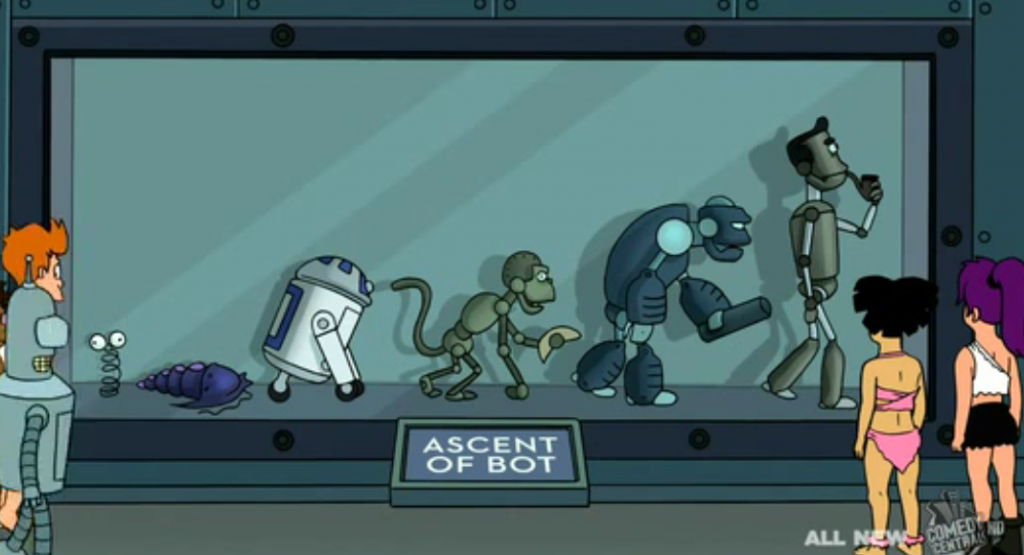That is to ask: Why has there been so much interest in cultural evolution in the last two decades or so? It seems to me that a lot of this thinking is just messing around, seeing if evolutionary ideas can somehow be attached to cultural phenomena in a coherent way. It seems more motivated by a desire to extend evolutionary thinking than by a desire to understand culture. And it’s not obvious to me that anyone has actually explained anything in this process, not so far.
In particular, has anyone used some theory of cultural evolution to explain some phenomenon of culture as well as, and ideally, better than competing non-evolutionary accounts? It’s not at all obvious to me that the answer to that question is “Yes.”
Note that I don’t exempt my own efforts from this criticism, which is why, on the whole, I’ve devoted more time to examining and analyzing cultural phenomenon than I have conceptualizing cultural evolution. In particular, I’ve spent a lot of time thinking about popular music in America, and the interaction of African-derived and European-derived styles (see, e.g. this longish paper) and, more recently, I’ve been looking at graffiti, which I’ll address later on.
Evolution?
One caveat: A lot depends on just what one means by cultural evolution. If one is just using ‘evolution’ as a substitute for ‘change,’ then the question has little meaning. It seems to me that much of memetics is like this, with the added innovation of attributing agency to the memes, rather than to people.
And then there’s gene-cultural coevolution (GCCE). Those folks may well have succeeded in coming up with useful explanations, e.g. lactose tolerance. But it’s not at all clear to me that GCCE can work with the kinds of phenomena that most interest me and that do constitute a great deal of cultural activity. As I’ve explained here, it’s not clear to me that GCCE has anything to say, for example, about something like the growth of graffiti in the last 40 years.
Graffiti 1
By ‘graffiti’ I don’t mean any writing on walls, but the specific practice that originated on the East Coast of the USA in Philadelphia and New York City in the late 1960s and early 1970s. The practice seems to have been pretty much confined to those cities by the early 1980s. But it had gone world-wide by the start of the current millennium. How did that happen? And why?
I don’t see that GCCE has any tools to answer that question. The spread is too fast for any biological changes to have been involved. Whatever’s going on has been going on purely within the cultural sphere. There are obvious things to point to concerning how it happened: 1) Press coverage of early graffiti made the activity more visible. 2) When graffiti became associated with hip-hop, it followed hip-hop in its spread through world pop culture. 3) Photography, books, and films (Style Wars, Wild Style) spread the word. 4) The emergence of the world-wide-web created a new means by which photos of graffiti could made instantly available around the world.
But none of that explains why the practice spread. What made graffiti so attractive to so many people in so many different places around the world? And why has it been, on the whole, so conservative, so that the themes and motifs that originated in the East Coast of the USA in the late 1970s and early 1980s are showing up in Japan in then 2000s? On one level that question answers itself. If the designs changed rapidly, so that putting any old design up on the walls counted as graffiti, then the activity would loose its identity, its genealogical connection with those first writers in New York City and Philadelphia. It would just be painting on walls, illegally. Big deal.
The genealogical connection IS important. Why? Note that, while stylistic conservatism maintains that identity, we also have to allow for the identity of individual writers within the tradtion. The tradition has to have enough internal variety to allow for that.
There are ways of talking about those questions, and you’ll find some of them in the literature, but the question I’m asking is this: Can a strong theory of cultural evolution do a better job of accounting for this spread than any other theory? If so, what would that theory look like?
Continue reading “Bleg: Why CULTURAL Evolution?”



